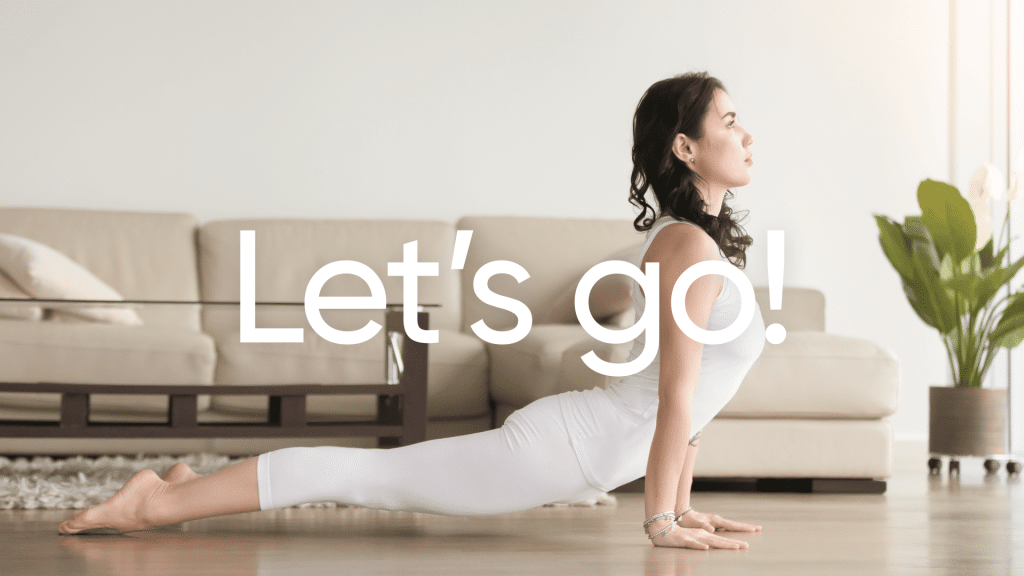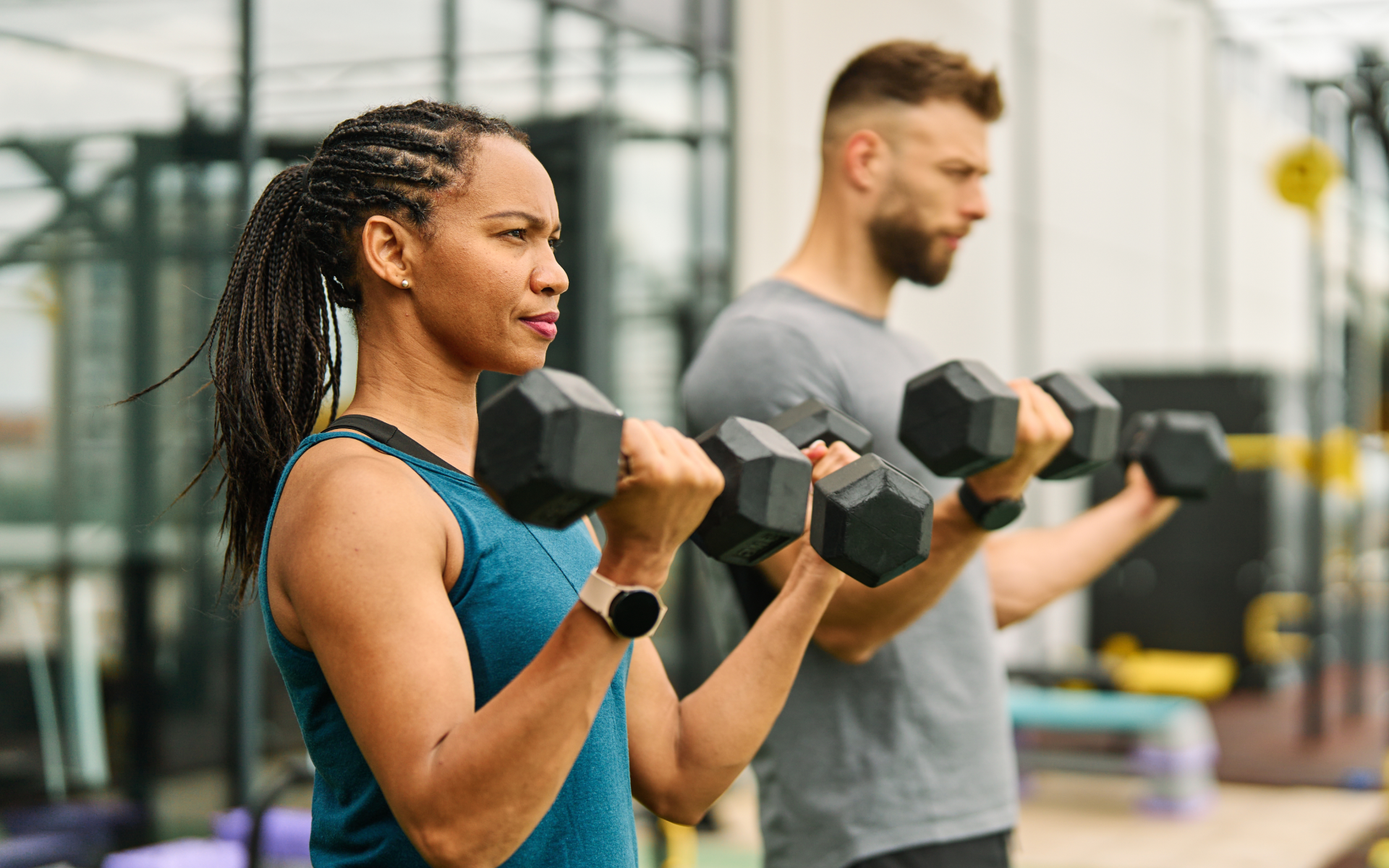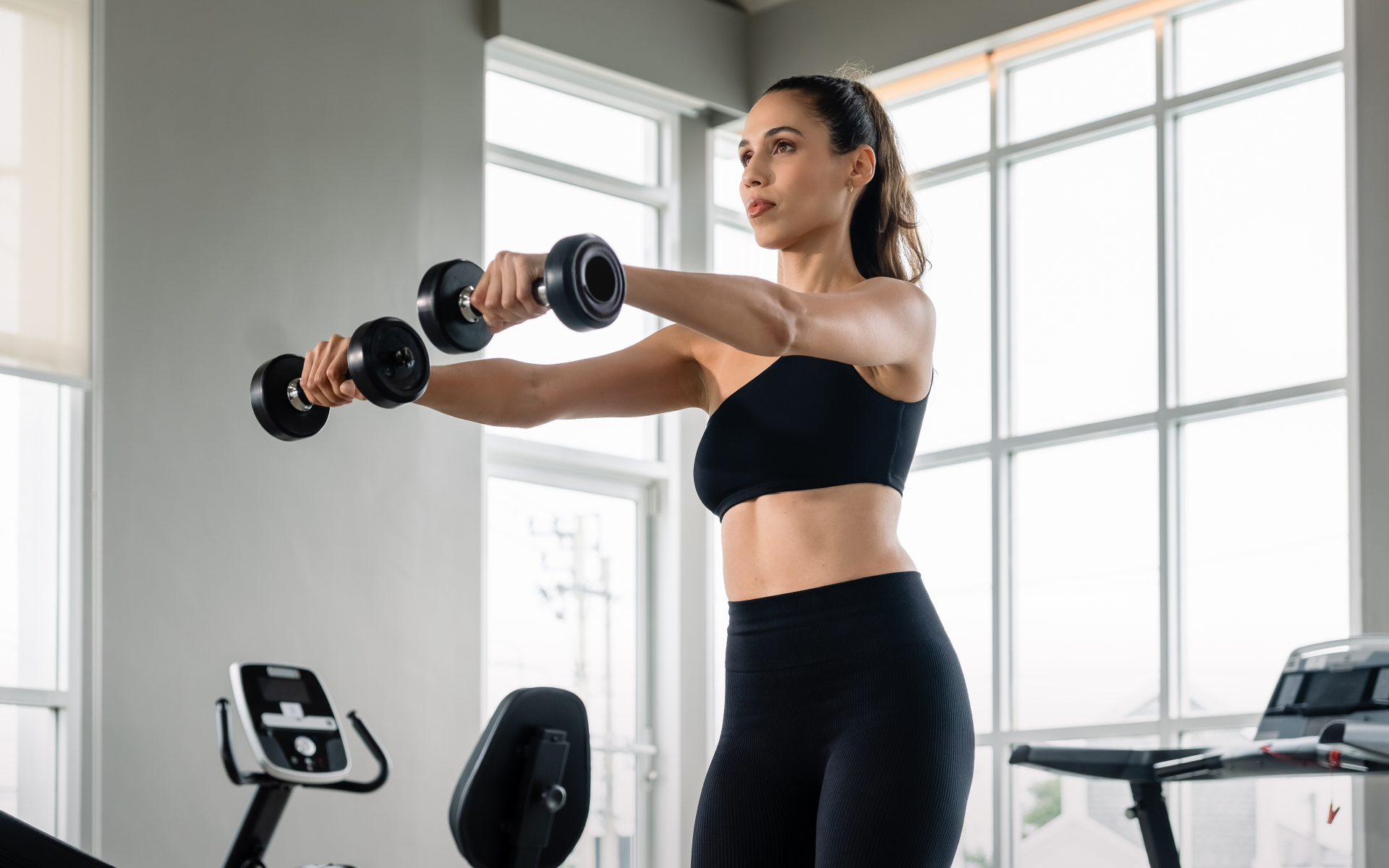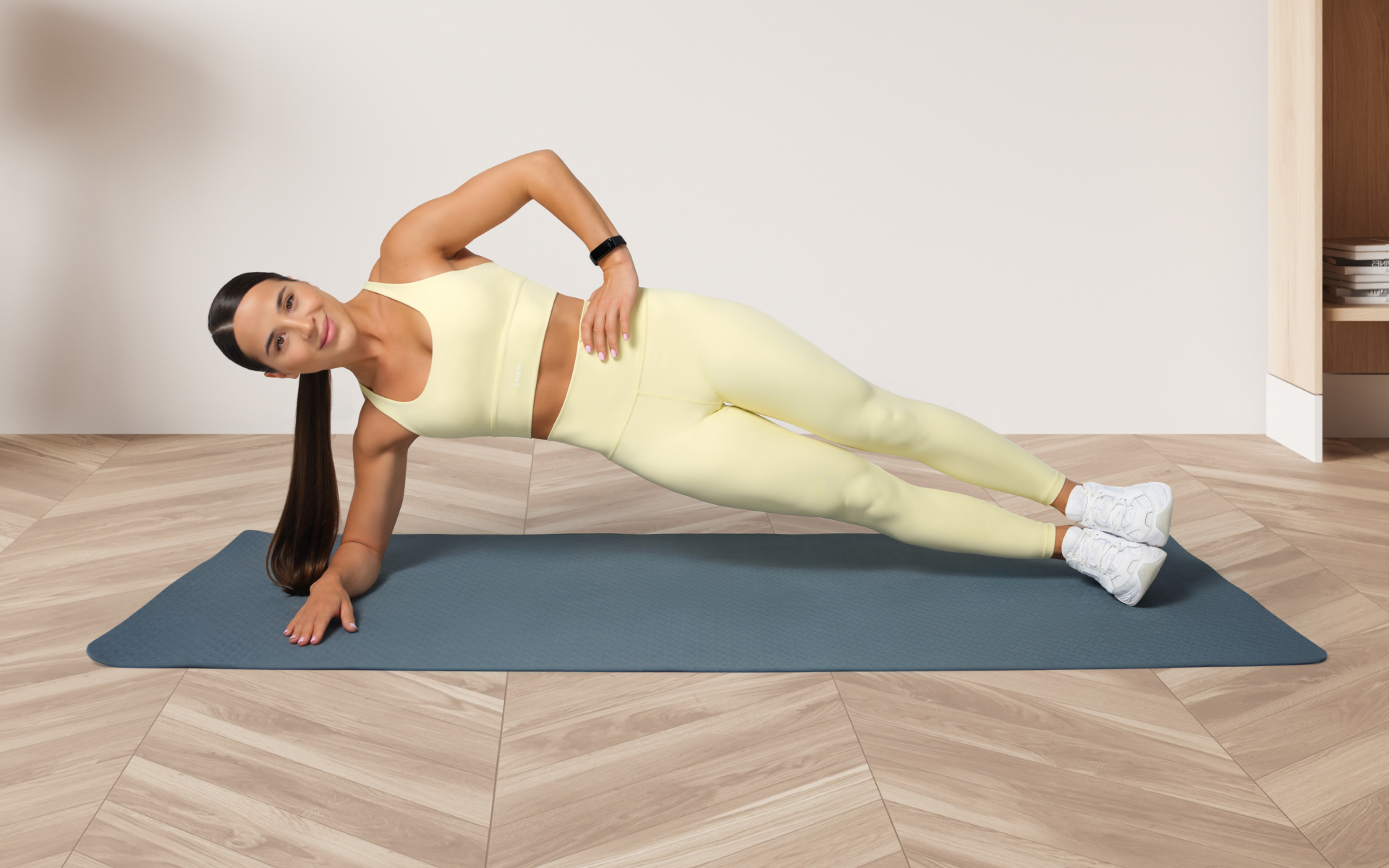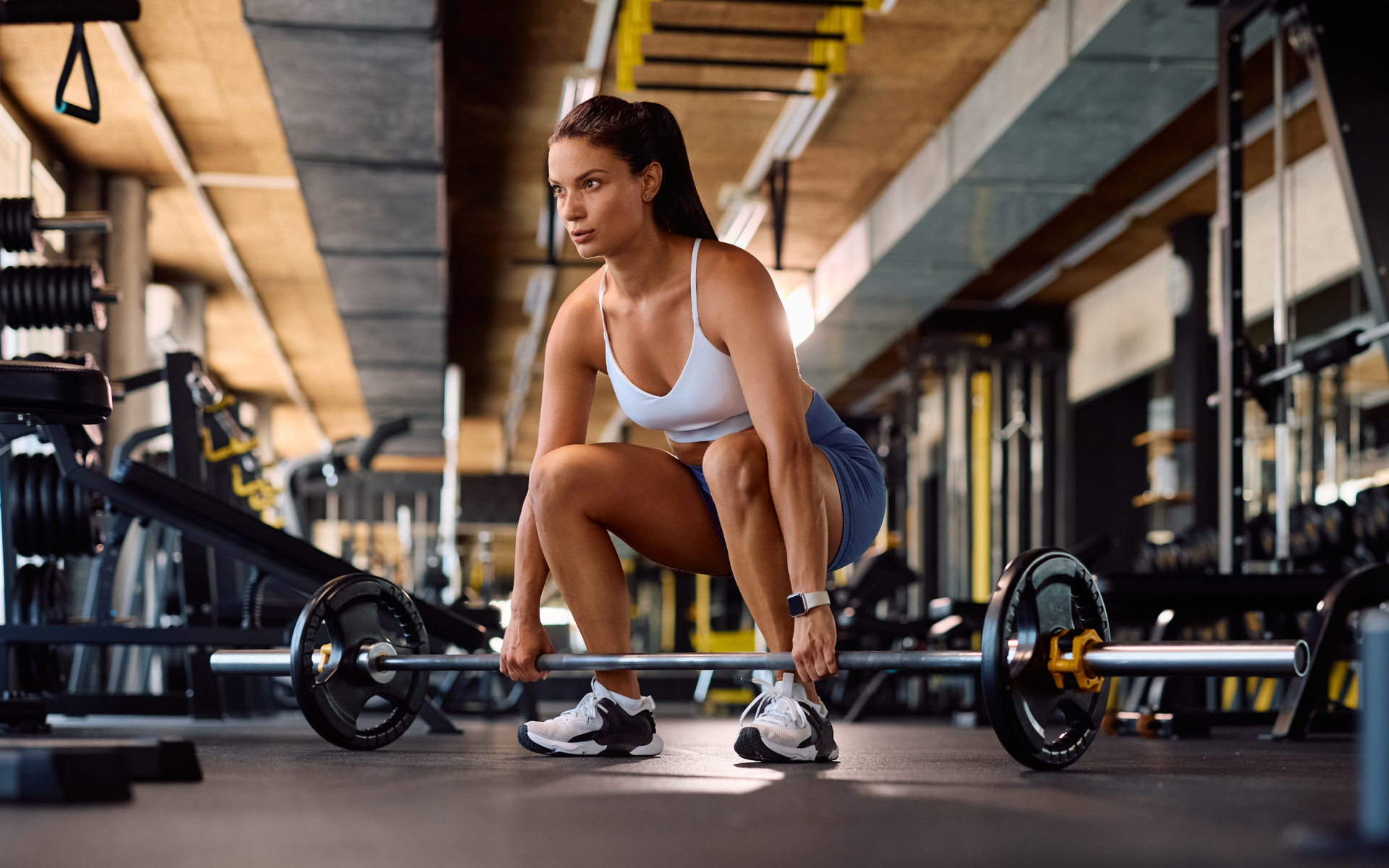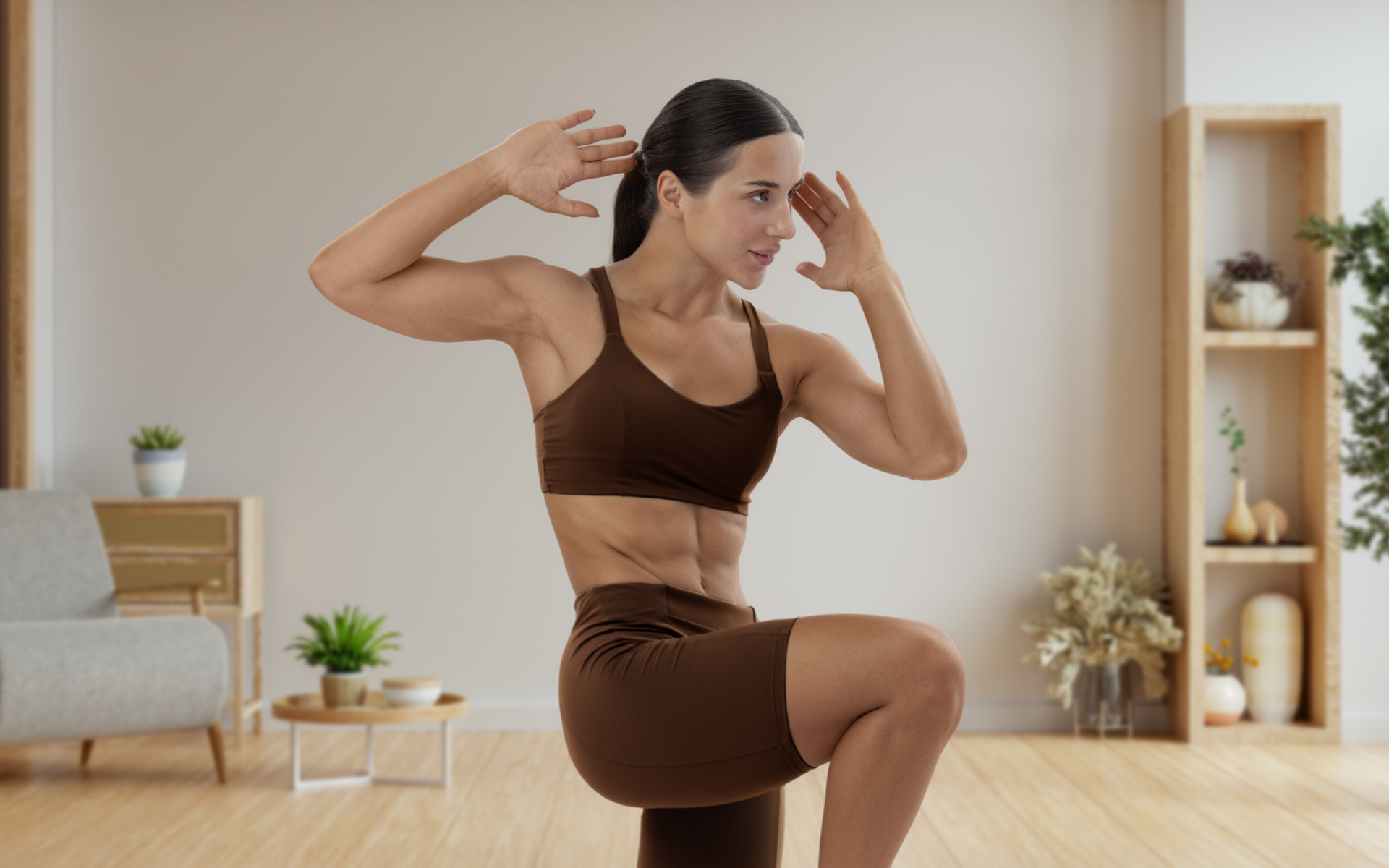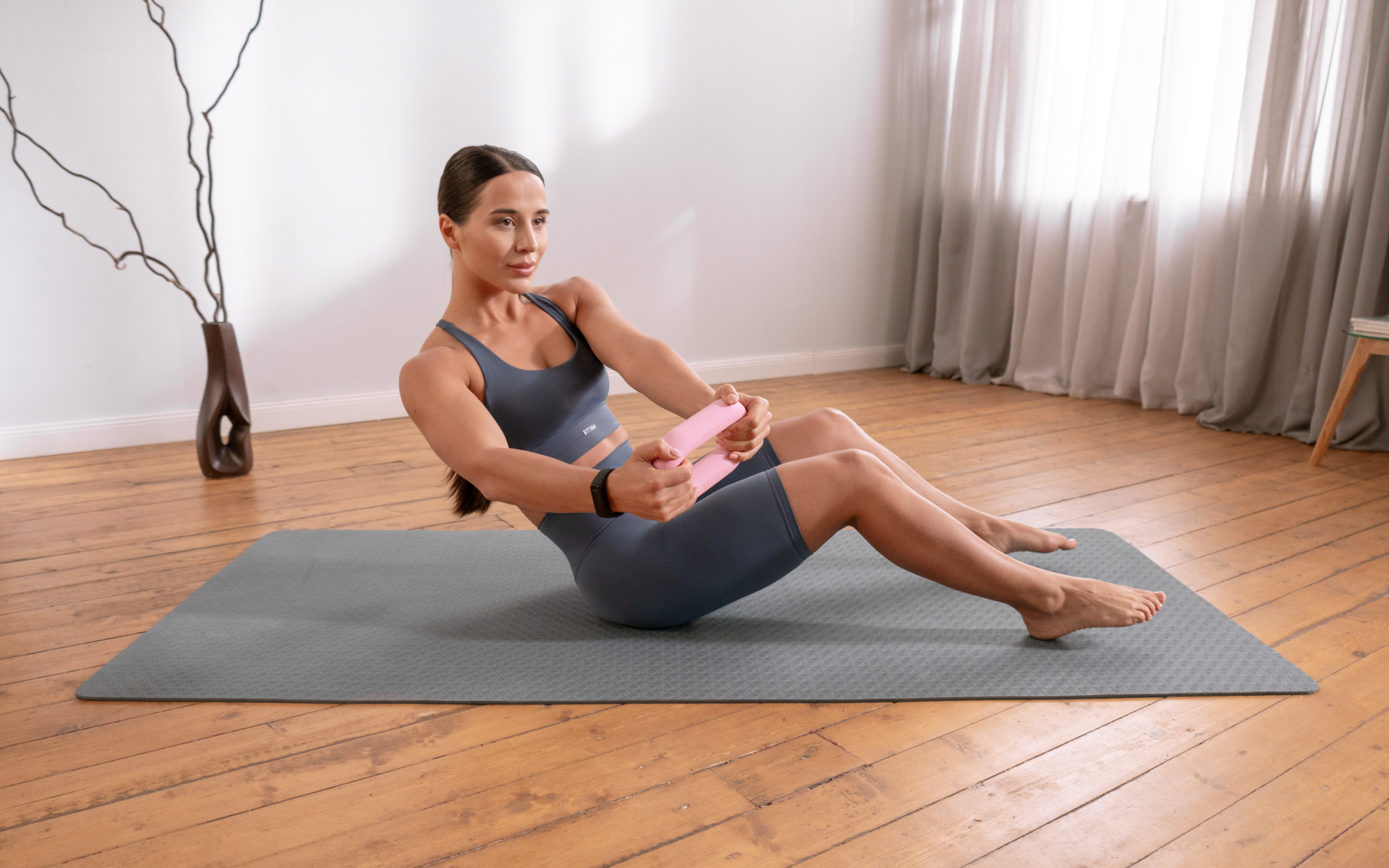We can fight it all we want, but the truth is that a day stuck in an office chair might become our new normal. In the same vein, long hours in front of a computer can make us feel sluggish, unmotivated and even depressed (1). There’s even research that backs this up: a study by the American College of Sports Medicine found that prolonged sitting can increase our risk of developing chronic diseases like heart disease and diabetes (7). Another study by the International Journal of Environmental Research and Public Health linked sitting for long periods to mental health issues like depression and anxiety (4). These are all great reasons to get up and move throughout the day! If you’re part of the statistic and wondering how to get more energy, don’t reach for that extra cup of coffee just yet. Instead, take a few minutes out of your day to do workouts at your desk. Here’s everything you need to know about getting fit and healthy at your desk.
Get your personalized
meal plan!
What Are The Best Workouts You Can Do Sitting At Your Desk?
There are certain aspects of desk exercises which make them conducive for office workers. These include them being: low-impact, able to be done without any specialist equipment, and having potential health benefits.
Low Impact
Impact refers to the force exerted onto your joints when exercising. Usually, the higher the impact, the greater the potential for injury and therefore the need for slow, controlled movements.
Now the last thing you need while seated at your desk is to spend a lot of time cautiously going through reps. Low impact exercises are perfect for this because they require much less force and can be done with more speed and ease.
No Specialist Equipment
Unless you have a standing desk, it’s unlikely that you’ll be able to accommodate any specialized exercise equipment in your workspace. That’s why the exercises outlined in this article are designed to be done without any equipment at all.
In some cases, you may be able to add a band or weighted object for extra resistance, if you happen to have one at your disposal. Feel free to experiment with this, however it is not necessary.
Potential Health Benefits
Even the gentlest, simplest, and quicker workout can have an impact on energy levels and overall health. Some health benefits of exercises done at the desk include: improved posture, increased circulation and oxygen levels, enhanced physical performance and strength gains (2) (6).
Not to mention, exercise has been linked to an improved mood, sharper cognitive abilities and even better sleep (3) (5).
So if you’re looking for a way to stay energized, fit and healthy while working from a desk, keep reading to learn about 20 exercises you can do at your desk.
Read More: Should You Take A Cold Shower After A Workout? Here’s What The Science Says
How To Work Out At Your Desk
Before we get into specific exercises, it’s important to keep a few things in mind. The main goal of desk exercises is to keep moving and not become sedentary for long periods. Aim to do each exercise anywhere from 15-60 seconds at a time, usually three times per day.
Start by focusing on low intensity exercises and gradually increase the intensity and repetitions as you become comfortable and see fit.
For your safety, ensure that you have enough space around your desk to move without hitting anything. If possible, it’s also a good idea to wear comfortable and supportive shoes while doing these exercises to prevent any unnecessary strain.
20 Workouts To Do At Your Desk
Here are 20 exercises that you can do at your desk:
1. Neck Rolls
Why: To stretch and strengthen the muscles in your neck that help you maintain good posture. May also help to relieve tension headaches.
Muscle Groups: Neck
Steps:
- Sit upright in your chair with a straight back and relaxed shoulders.
- Gently roll your head in a circular motion to the right.
- Slowly make wider circles with your neck until you feel a comfortable stretch.
- Reverse the circles and continue for 10-15 seconds.
- Keep your torso and shoulders relaxed throughout the exercise.
2. Shoulder Shrugs
Why: To stretch and strengthen the muscles in your neck, upper back and shoulders that help you maintain good posture. Helps relieve tension and stress.
Muscle Groups: Shoulders, upper back, neck
Steps:
- Sit upright in your chair with a straight back.
- Engage your core and grasp the sides of the chair for stability.
- Inhale and lift your shoulders up towards your ears.
- Exhale and relax them back down to their neutral position.
- Repeat 10-15 times.
- Keep your core engaged and back straight throughout the exercise.
Want to build an attention-grabbing bubble butt, blast away fat that’s stored in all the wrong places, spring-clean your diet, turn back the clock on your skin, skyrocket your self-confidence and shatter your insecurities? Check out the BetterMe app and set this plan in motion!
3. Arm Pulses
Why: To stretch and strengthen the muscles in your arms and shoulders, as well as improve circulation. Relieve tension built up from long periods of typing.
Muscle Groups: Arms, shoulders
Steps:
- Stand or sit near your desk, with feet hip-width apart.
- Bend your elbows and reach up towards the ceiling until your arms are parallel.
- Move your arms slightly up and down in small pulses for 10-15 seconds.
- Keep your shoulders relaxed throughout the exercise.
- For added intensity, use a light weight or band for resistance.
4. Tricep Dips
Why: To strengthen the muscles in your arms and shoulders, increase stability and posture. Perfect for improving range of motion in triceps and shoulders.
Muscle Groups: Triceps, chest
Steps:
- Sit on the edge of a stationary chair (preferably one without wheels for your safety)
- Place your hands next to your hips on the chair, fingers facing inwards.
- Engage your core and slowly lift up off the chair, balancing on your arms.
- Bend your elbows until they reach a 90-degree angle and then press back up.
- Repeat 10-15 times.
- Keep your core engaged and back straight throughout the exercise.
5. Desk-Supported Push-Ups
Why: To strengthen your chest, shoulders and arms. Improve upper body strength and posture.
Muscle Groups: Chest, shoulders, arms
Steps:
- Place your hands on the edge of a stationary desk at shoulder width apart.
- Engage your core and slowly bend your elbows, lowering yourself towards the desk.
- Push back up until your arms are straight.
- Repeat 10-15 times.
- Keep your core engaged and back straight throughout the exercise.
Read More: How To Workout Lats With Dumbbells For Maximum Results
6. Wall Sits
Why: To strengthen the muscles in your legs and improve stability. Increases cardiovascular endurance and reduces fatigue.
Muscle Groups: Glutes, thighs
Steps:
- Stand with your back against a wall and feet hip-width apart.
- Slide your back down the wall, until your thighs are parallel to the floor.
- Hold this position for 10-15 seconds.
- Keep your core engaged and back straight throughout the exercise. Ensure your feet stay flat on the floor.
- To increase intensity, hold for longer or add a light weight band for extra resistance.
7. Chair Squats
Why: To strengthen the muscles in your legs, particularly the glutes and quads. Improves stability and posture.
Muscle Groups: Glutes, quads
Steps:
- Stand in front of a stationary chair with feet hip-width apart.
- Engage your core and slowly lower yourself down into the chair, as if you were sitting down.
- Push back up until your legs are straight and come back to standing position.
- Repeat 10-15 times.
- Keep your core engaged and back straight throughout the exercise.
- For added intensity, hold a light weight or band for resistance.
8. Desk/Wall-Supported Calf Raises
Why: To strengthen the muscles in your calves, improve stability and posture. Increases flexibility of the Achilles tendon.
Muscle Groups: Calves, Achilles tendon
Steps:
- Place your hands on the edge of a stationary desk or wall and feet hip-width apart.
- Engage your core and slowly lift yourself up onto the balls of your feet, while keeping your heels on the ground.
- Push back down and repeat 10-15 times.
- Keep your core engaged and back straight throughout the exercise.
- To increase intensity, add a light weight or band for extra resistance.
9. Seated Bicycle Crunches
Why: To strengthen your core, improve stability and posture. Increases cardiovascular endurance and reduces fatigue.
Muscle Groups: Core, lower back
Steps:
- Sit on a stationary chair and clasp your hands behind your head.
- Engage your core and twist to the left, bringing your right elbow towards your left knee.
- Twist back to center and switch sides.
- Repeat 10-15 times.
- Keep your core engaged and back straight throughout the exercise.
- To increase intensity, add a light weight or band for extra resistance.
When it comes to weight loss, progress is made by inches, not miles, so it’s much harder to track and a lot easier to give up. BetterMe app is your personal trainer, nutritionist and support system all in one. Start using our app to stay on track and hold yourself accountable!
10. Torso Twist
Why: To strengthen and stretch your back, improve stability and posture. Improves flexibility of the spine.
Muscle Groups: Core, lower back
Steps:
- Sit on a stationary chair and clasp your hands behind your head.
- Keeping your feet on the ground, twist to the left until your right elbow is parallel with the floor.
- Twist back to center and switch sides.
- Repeat 10-15 times.
- Keep your core engaged and back straight throughout the exercise.
- To increase intensity, add a light weight or band for extra resistance.
- For added stretching, hold the twist for 10-15 seconds on each side.
11. Hamstring Stretch
Why: To stretch the muscles in your legs and improve flexibility. Improves posture, balance and coordination.
Muscle Groups: Hamstrings
Steps:
- Sit on a stationary chair and place your right foot on the edge of the desk or wall.
- Keeping your back straight and core engaged, slowly lean forward until you feel a comfortable stretch in the back of your thigh.
- Hold the stretch for 10-15 seconds.
- Repeat the same on your left side.
- To increase intensity, add a light weight or band for extra resistance.
- For added stretching, hold the twist for 10-15 seconds on each side.
It is important to keep your back straight and core engaged throughout the exercise. Check in with your body to ensure you do not push beyond the point of discomfort.
12. Standing Glute Bridges
Why: To strengthen the muscles in your glutes and lower back, improve stability and posture. Increases flexibility of the spine.
Muscle Groups: Glutes, lower back
Steps:
- Stand with feet hip-width apart and arms at your sides.
- Engage your core and slowly lower yourself down into a bridge position, with your glutes as high as possible.
- Press through your heels and slowly come back to standing position.
- Repeat 10-15 times.
- Keep your core engaged and back straight throughout the exercise.
- To increase intensity, add a light weight or band for extra resistance.
- For added stretching, hold the bridge position for 10-15 seconds.
13. Wrist Extension Stretch
Why: To stretch the muscles in your arms and improve flexibility. Reduces fatigue, tension and stress.
Muscle Groups: Forearms
Steps:
- Sit on a stationary chair and place your palms face up on the edge of the desk or wall.
- Keeping your back straight and core engaged, slowly press your hands into the surface until you feel a comfortable stretch in your forearms.
- Hold the stretch for 10-15 seconds.
- Repeat the same on your palms face down.
- To increase intensity, add a light weight or band for extra resistance.
- For added stretching, hold the twist for 10-15 seconds on each side.
- It is important to keep your back straight and core engaged throughout the exercise.
- Check in with your body to ensure you do not push beyond the point of discomfort.
14. Lunges
Why: To strengthen and stretch the muscles in your legs, improve stability and posture. Improves flexibility of the spine.
Why: To strengthen your glutes and reduce the risk of lower back pain. Improves balance and coordination.
Muscle Groups: Glutes, quads, hamstrings
Steps:
- Stand with feet hip-width apart and arms at your sides.
- Step your right leg back into a lunge position and bend your knees until both of your legs form 90-degree angles.
- Push off with your right foot to come back to standing position.
- Repeat on the left side.
- Do 10-15 repetitions, alternating sides.
- Keep your core engaged and back straight throughout the exercise.
- To increase intensity, add a light weight or band for extra resistance.
- For added stretching, hold the lunge position for 10-15 seconds on each side.
15. Eagle Arms
Why: To stretch the muscles in your upper body and improve flexibility. Improves posture, balance and coordination.
Muscle Groups: Chest, shoulders
Steps:
- Sit on a stationary chair and raise your arms parallel to the floor.
- Cross your right arm over the left, bend your elbows and clasp your hands together.
- Engage your core and slowly twist your torso to the right until you feel a comfortable stretch in the chest and shoulders.
- Hold the twist for 10-15 seconds.
- Release your arms and repeat on the left side.
- To increase the intensity, add a light weight or band for extra resistance.
- For added stretching, hold the twist for 10-15 seconds on each side.
- It is important to keep your back straight and core engaged throughout the exercise.
- Check in with your body to ensure you do not push beyond the point of discomfort.
The Bottom Line
These 20 exercises will help you stay fit and healthy even when sitting at your desk all day. Make sure to take a break every hour, stand up and perform a few of these exercises to stay active.
Remember to warm up your muscles before any physical activity and cool down after each exercise session. Most importantly, listen to your body and don’t push yourself beyond the point of comfort.
DISCLAIMER:
This article is intended for general informational purposes only and does not serve to address individual circumstances. It is not a substitute for professional advice or help and should not be relied on for making any kind of decision-making. Any action taken as a direct or indirect result of the information in this article is entirely at your own risk and is your sole responsibility.
BetterMe, its content staff, and its medical advisors accept no responsibility for inaccuracies, errors, misstatements, inconsistencies, or omissions and specifically disclaim any liability, loss or risk, personal, professional or otherwise, which may be incurred as a consequence, directly or indirectly, of the use and/or application of any content.
You should always seek the advice of your physician or other qualified health provider with any questions you may have regarding a medical condition or your specific situation. Never disregard professional medical advice or delay seeking it because of BetterMe content. If you suspect or think you may have a medical emergency, call your doctor.
SOURCES:
- Computer use and stress, sleep disturbances, and symptoms of depression among young adults – a prospective cohort study (2012, biomedcentral.com)
- Effect of an exercise program for posture correction on musculoskeletal pain (2015, ncbi.nlm.nih.gov)
- Exercise can improve sleep quality: a systematic review and meta-analysis (2018, ncbi.nlm.nih.gov)
- Lifestyle Prescription for Depression with a Focus on Nature Exposure and Screen Time: A Narrative Review (2022, mdpi.com)
- Physical Activity and Brain Health (2019, mdpi.com)
- Physical Exercise: An Overview of Benefits From Psychological Level to Genetics and Beyond (2021, frontiersin.org)
- Too Much Sitting: The Population-Health Science of Sedentary Behavior (2010, journals.lww.com)





